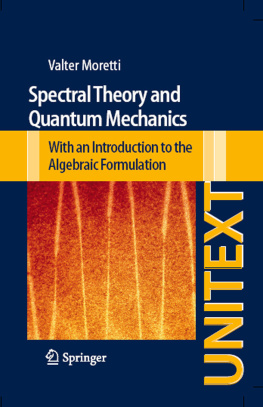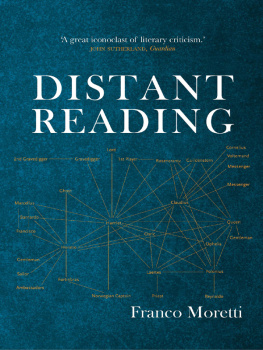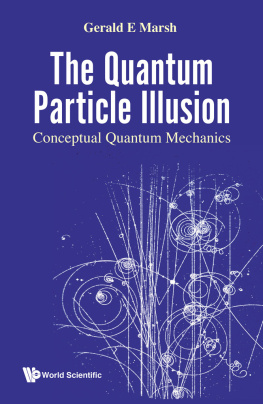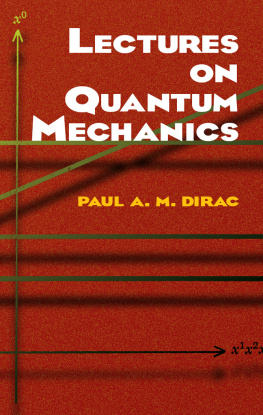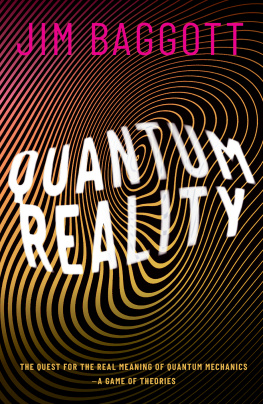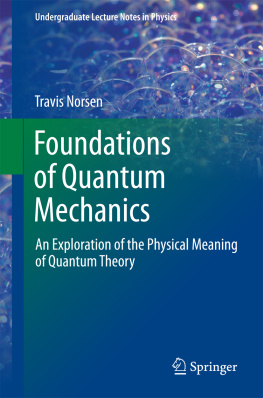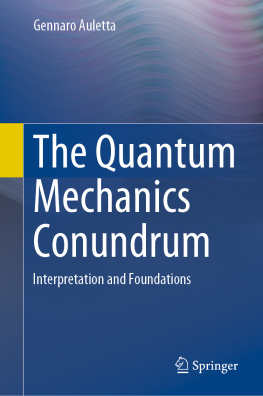1.1.1 1.1.1 Scope and structure
One of the aims of the present book is to explain the mathematical foundations of Quantum Mechanics, and Quantum Theories in general, in a mathematically rigorous way. That said, this is a treatise on Mathematics (or Mathematical Physics) rather than a text on Quantum Mechanics. Except for a few cases, the physical phenomenology is left in the background, to privilege the theorys formal and logical aspects. At any rate several examples of the physical formalism are presented, lest one lose touch with the world of physics.
In alternative to, and irrespective of, the physical content, the book should be considered as an introductory text, albeit touching upon rather advanced topics, on functional analysis on Hilbert spaces, including a few elementary yet fundamental results on C *-algebras. Special attention is given to a series of results in spectral theory, such as the various formulations of the spectral theorem for bounded normal operators and not necessarily bounded, self-adjoint ones. This is, as a matter of fact, one further scope of the text. The mathematical formulation of Quantum Theories is confined to Chapters .
A third purpose is to collect in one place a number of rigorous and useful results on the mathematical structure of Quantum Mechanics and Quantum Theories. These are more advanced than what is normally encountered in quantum physics manuals. Many of these aspects have been known for a long time but are scattered in the specialistic literature. We should mention Gleason s theorem , the theorem of Kochen and Specker , the theorems of Stone - von Neumann and Mackey , Stone s theorem and von Neumann s theorem about one-parameter unitary groups, Kadison s theorem , besides the better known Wigner , Bargmann and GNS theorems ; or, more abstract operator theory such as Fuglede s theorem , or the polar decomposition for closed unbounded operators (which is relevant in the Tomita - Takesaki theory and statistical Quantum Mechanics in relationship to the KMS condition); furthermore, self-adjoint properties for symmetric operators, due to Nelson, that descend from the existence of dense sets of analytical vectors, and finally, Katos work (but not only his) on the essential self-adjointness of certain kinds of operators and their limits from the bottom of the spectrum (mostly based on the Kato - Rellich theorem ).
Some chapters suffice to cover a good part of the material suitable for advanced courses on Mathematical Methods in Physics; this is common for Masters degrees in Physics or doctoral degrees, if we assume a certain familiarity with notions, results and elementary techniques of measure theory. The text may also be used for a higherlevel course in Matematical Physics that includes foundational material on Quantum Mechanics. In the attempt to reach out to Master or Ph.D. students, both in physics with an interest in mathematical methods or in mathematics with an inclination towards physical applications, the author has tried to prepare a self-contained text, as far as possible: hence a primer on general topology and abstract measure theory was included, together with an appendice on differential geometry. Most chapters are accompanied by exercises, many of which solved explicitly.
The book could, finally, be useful to scientists when organising and presenting accurately the profusion of advanced material disseminated in the literature.
At the end of this introductory chapter some results from topology and measure theory are recalled, much needed throughout the whole treatise. The rest of the book is ideally divided into three parts. The first part, up to , regards the general theory of operators on Hilbert spaces, and introduces several fairly general notions, like Banach spaces. Core results are proved, such as the theorems of Baire, Hahn-Banach and Banach-Steinhaus, as well as the fixed-point theorem of Banach-Caccioppoli, the Arzel-Ascoli theorem and Fredholms alternative, plus some elementary consequences. In this part basic topological notions are summarised, in the belief that this might benefit physics students. The latters training on general topology is at times disparate and often presents gaps, because this subject is, alas, usually taught sporadically in physics curricula, and not learnt in an organic way like students in mathematics do.
Part two of the book ends in spectral theory is applied to several practical and completely abstract contexts, both quantum and not.
Chapter . The mathematical starting point is the idea, going back to von Neumann, that the propositions of physical quantum systems are described by the lattice of orthogonal projectors on a complex Hilbert space. Maximal sets of physically compatible propositions (in the quantum sense) are described by distributive and orthocomplemented, bounded and -complete lattices. From this standpoint the quantum definition of an observable in terms of a self-adjoint operator is extremely natural, as is, on the other hand, the formulation of the spectral decomposition theorem. Quantum states are defined as measures on the lattice of all orthogonal projectors, which is no longer distributive (due to the presence, in the quantum world, of incompatible propositions and observables). Using Gleason s theorem states are characterised as positive operators of trace class with unit trace. Pure states (rays in the Hilbert space of the physical system) arise as extreme elements of the convex body of states.
The third part of the book is devoted to formulating axiomatically the mathematical foundations of Quantum Mechanics and investigating more advanced topics like quantum symmetries and the algebraic formulation of quantum theories . A comprehensive study is reserved to the notions of quantum symmetry and symmetry group (both Wigners and Kadisons definitions are discussed). Dynamical symmetries and the quantum version of Nther s theorem are covered as well. The Galilean group is employed repeatedly, together with its subgroups and central extensions, as reference symmetry group, to explain the theory of projective unitary representations. Bargmann s theorem on the existence of unitary representations of simpy connected Lie groups whose Lie algebra obeys a certain cohomology constraint is proved, and Bargmanns rule of superselection of the mass is discussed in detail. Then the useful theorems of Grding and Nelson for projective unit ary representations of Lie groups of symmetries are considered. Important topics are examined that are often neglected in manuals, like the formulation of the uniqueness of unitary representations of the canonical commutation relations (theorems of Stone-von Neumann and Mackey), or the theoretical difficulties in defining time as the conjugate operator to energy (the Hamiltonian). The mathematical hurdles one must overcome in order to make the statement of Ehrenfest s theorem precise are briefly treated. offers an introduction to the ideas and methods of the abstract formulation of observables and algebraic states via C *-algebras. Here one finds the proof to the GNS theorem and some consequences of purely mathematical flavour, like the general theorem of Gelfand - Najmark . This closing chapter contains also material on quantum symmetries in an algebraic setting. As example the notion of C *- algebra of Weyl associated to a symplectic space (usually infinite-dimensional) is discussed.

